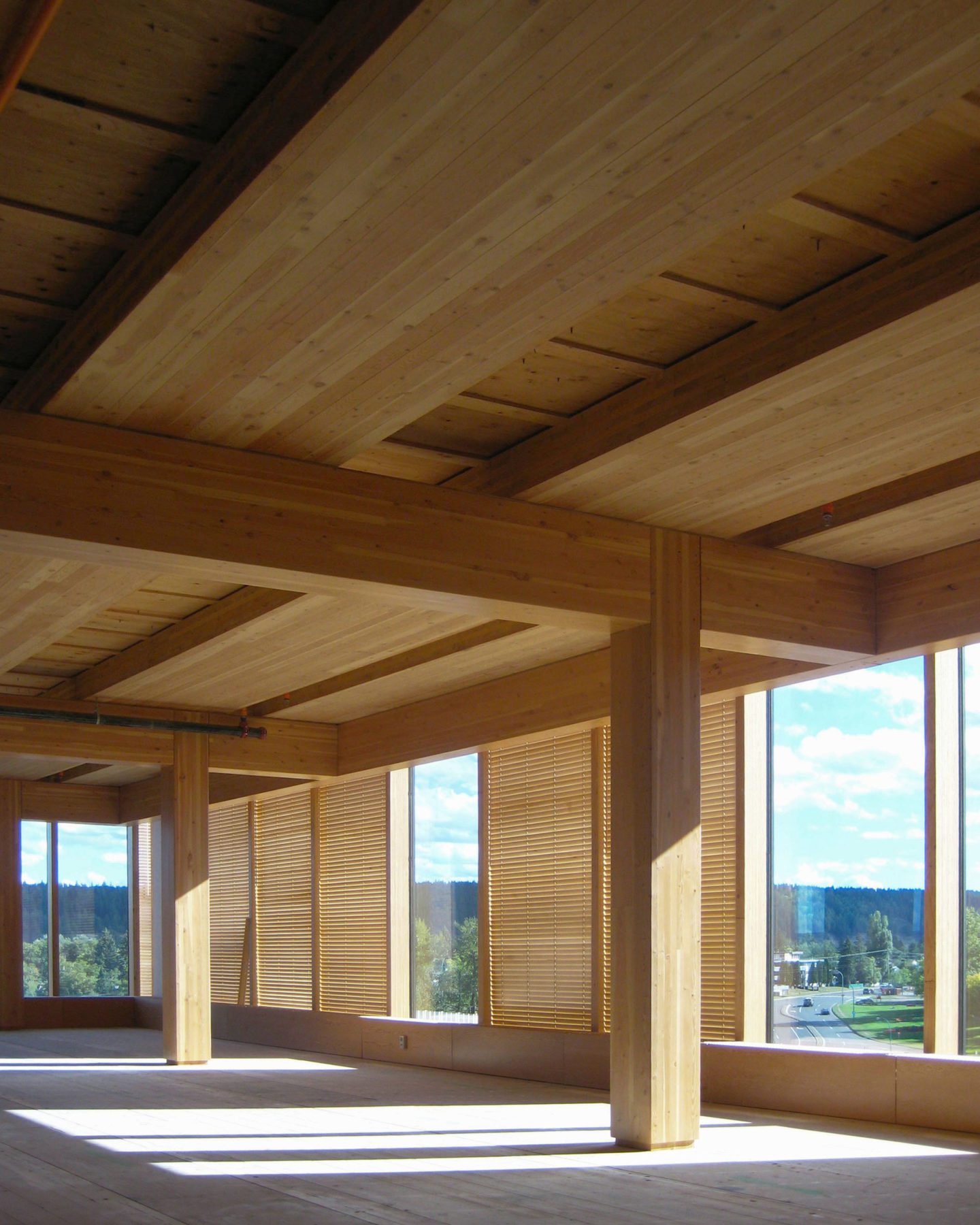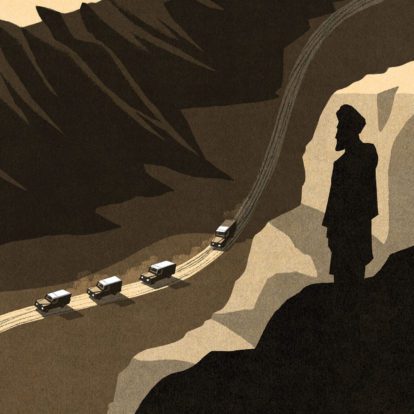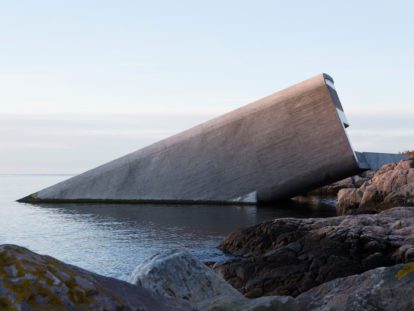Experts are now proclaiming that wood is the answer to the global housing crisis. Michael Green, an architect based in Vancouver, is arguably the most ambitious and visionary architect working in this medium. Here he explains what has inspired him, how it’s possible to recreate the Empire State Building in wood, and why wooden architecture is a powerful legacy for future generations.
Our philosophy is based on what we call Darwinian Modernism. As Darwin observed, nature finds a path to evolve that uses as little energy as possible to thrive and survive. Design can share those same values. [In our] design process we slowly remove the unessential from the project until only the essential remains.
I was inspired by my grandfather’s love of carpentry. He was a historian and the President of the American Historical Society. But what he really loved were the things that I love: the wilderness and making things with his hands, and working with wood. These were the things I experienced with him as a young child.

‘Our philosophy is based on what we call Darwinian Modernism. As Darwin observed, nature finds a path to evolve that uses as little energy as possible to thrive and survive. Design can share those same values.’
We have to house the world and we have to choose a range of solutions that serve the cultural, geographic, environmental and climatic diversity of the world. No single solution will answer the question of true sustainability. In dense cities wood buildings that replace concrete buildings certainly offer a more sustainable solution if the wood is sourced from sustainable forest practices.
We did a study that showed that we could build the Empire State Building at 102 storeys tall entirely in wood construction. We engineered it and it works, we proved it! Now if the public say ‘Wow, that’s amazing’, then you can say, ‘Right, we’re building a 16-storey building’. A 16-storey building doesn’t sound so scary when you’ve been talking about 102 storeys!
I spend a lot of my time trying to shift the perception of what’s possible. Baobab [the proposal by Green to build the world’s tallest wooden building in Paris] was about that too. We can build 35 storeys – why not? Making that proposal expanded everybody’s imagination. It’s the same with the Empire State Building study project, and the conversation about tall buildings. It’s not because I think that’s likely to be the future. The future is really about people’s needs, which is buildings set at 12, 15, 18 storeys. These are the kind of heights that the majority of the population live in.
In some parts of the world, the mission to build in wood with advanced wood products may well be the answer we are looking for to stop deforestation. If we change the value of land to support replanting trees rather than cutting them down for agricultural land we may well have found the economic incentive needed. Layer after layer of issues need to be understood to express sustainability. I believe wood buildings offer one very good tool to a more sustainable future, but I don’t see them as the answer to all the world’s building challenges.
We use SPF (Spruce, Pine and Fir) trees, which grow in North America. They’re a little different to Spruce trees in Europe. We also have Douglas fir trees, which produce a very strong wood. We’ve used hardwoods as well, so we’ve done mass timber projects that are not in CLT (cross-laminated timber) but in other mass timber panels, using Alder and Maple hardwoods. I believe pretty strongly in this. I think I’m fair in saying that we coined the term ‘mass timber panels’ and the reason that I felt it was important is because CLT has become the dominant mass timber panel, especially in Europe. But there are alternatives: different products for different purposes.
We’re always focused on how to use as little wood as possible, even with wood buildings. I always think it’s like making soup: when you throw the wood products into the bowl, you’re going to change the proportions, depending on what kind of solution you want. I think it’s a shame that too much of the conversation is centred on CLT. It’s only like making tomato soup!
We’re tearing down buildings that are twenty years old. Fifty years is now old for a building. We’ve entered a kind of consumer culture of buildings, which doesn’t see buildings as heirlooms. I think that these wood buildings give us the chance to return to that heirloom quality of building. It’s a romantic notion, but I think it’s a really important one.
‘Trees are remarkable. We know now that trees can signal each other, through scent.’
Michael Green
The older I get, the more I believe we should develop a romantic understanding of the things that matter to us. I have a very romantic notion about the wilderness, and protecting wild places, but I also have a romantic idea of the objects that I own, and how I can hand them on as a legacy, from generation to generation, objects that I’ve been given by my grandfather, from his father. I’ve never in my life met a single person who owns a concrete table that they received because it was handed down from their grandfather to them. But I think you’d be hard pressed to talk to anybody and not hear that they have some wooden object: a chair, a table, a toy, a box, that’s been handed down to them from a generation before them.
Wood is something you fall in love with because you want to give it to new generations. That is the very essence of sustainability. We don’t talk about it enough, but it’s the other side of the coin of why wood matters. It’s not just about sustainability on the environmental side – that you can grow a tree and it sequesters carbon – but it’s also about making things that have a tremendous life-cycle potential, a generational potential that traditional buildings have not had for over a century.
Trees are remarkable. We know now that trees can signal each other, through scent. When an insect is attacking one tree, the tree will let off a scent that tries to repel the insect but also warns other trees in the forest that it’s under attack. Trees also communicate entirely through the mitochondrial fungi below the ground, about health and nutrient issues, about moving carbon between trees. It’s amazing how the forest works and we’re only just beginning to understand this.
When I say that cutting down a tree is cutting down a life, it’s a life that has communicated, in so many different ways. Even when they’re under attack, they can communicate pretty quickly. They can make their leaves bitter when an animal starts to eat them; they’ll push a bitter taste into their leaves. And the other trees around them will do the same thing, so that’s communication through the soil, through the root systems and the fungi in the ground.
Numbers
53
Tallest wooden building in the world, in metres, Brock Commons in Vancouver.
350
The proposed tallest wooden building in the world, in metres, in Tokyo by 2041.
25%
Wooden skyscrapers are estimated to be around a quarter of the weight of an equivalent reinforced-concrete structure.
Our clients find that they are more productive when they work in wood spaces and that their kids learn more. It’s a wonderful quality of the material that somehow it seems biologically connected to humans. I often think about human evolution and the way that our species has always lived amongst natural materials, stone, earth and wood. Why would we expect our species to evolve within the space of a century to feel most comfortable surrounded by man made materials crafted of complex polymers and coatings? It seems obvious that natural materials – wood – would simply feel better to us all. Ironically though I talk a lot about wood in building our cities of the future, I believe that the real discussion for our future is more about social connection and community building. The very technical qualities of our wood buildings often overshadow the qualities of those same buildings that I am most proud of. The future of city building will continue to be about bringing us closer together with greater density but it also must be about the quality of life when we live closer. How do we ensure that people feel a sense of belonging and a positive ambition for their future?
Parks and public space become ever more important as we build more densely. Our connection and understanding of nature when we are more removed from it living in dense cities also becomes ever more important. We have to design housing and cities around experiences, adventure, discovery, community and wonder as a way to feed the human spirit with the qualities of life that endure. Design can help in many ways, from housing to urban design, from landscape to experience design. No single aspect of design trumps another.










